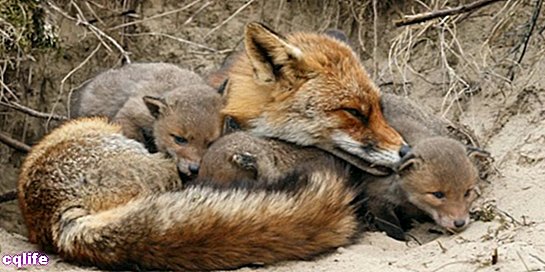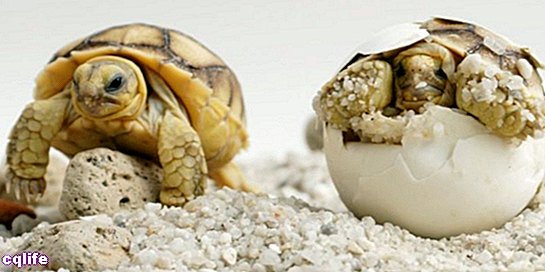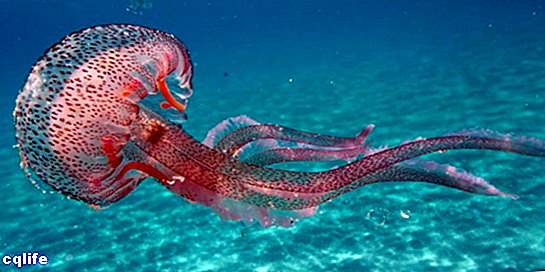- What is reproduction in animals?
- Asexual reproduction in animals
- Sexual reproduction in animals
- Alternating play
We explain what the process of reproduction in animals consists of, its implications and sexual and asexual mechanisms.

What is reproduction in animals?
Thereproduction is the set of biological processes through which theliving beings produce newindividuals similar to themselves, members of their own species. The reproductive process can take place from one or two individuals parents (asexual and sexual reproduction respectively).
Reproductive processes vary enormously depending on the species and thekingdom to which it belongs. Thus, for example,plants and the mushrooms they reproduce by mechanisms significantly different from those of animals.
However, the reproduction of all living beings has a feature in common, regardless of the kingdom to which they belong: it is governed by the principle of the self-perpetuation of the species, that is, through the reproductive process the members of a species produce new offspring to retain their genetic material and perpetuate the life cycle.
There are two types of reproductive mechanisms, which are used depending on the species and the conditions in which individuals are found: asexual and sexual mechanisms.
- Theasexual mechanisms. They are those that allow an individual to reproduce on their own, without the need for another parent or the intervention of germ cells (also called gametes) such as sperm and eggs. In asexual reproduction there are different types of self-replication mechanisms (such as the Binary fission or fragmentation) and all of them have in common the production of new individuals who are genetically identical to the parent, that is,clones. These mechanisms have certain advantages, such as how cheap and simple they are, and how quickly splitting can happen. However, they do not provide genetic variability to the species (since all the offspring are identical to each other and to the parent), thus allowing very rigid and slow evolutionary margins.
- Thesexual mechanisms. They are those that involve the participation of individuals of both sexes since they require the union of cells reproductive or germ cells from a male and a female entity, to fuse their genetic materials and give rise to a zygote. When developing, this new cell, product of the fusion, will give rise to a new individual, whose genetic code will be different from those of its parents. Although sexual reproduction has a much higher energy cost, requires more time and produces fewer individuals, it has a great advantage over asexual reproduction: it allows genetic variability, which is key to the evolutionary process and the adaptation of species to the new conditions of life. Without this variability, changes in species would take much longerweather, since it would requiremutations spontaneousDNA, something that happens very sporadically.
Depending on whether it is sexual or asexual, the mechanisms of animal reproduction will involve certain biochemical, cellular and even social processes. These necessary processes include the acquisition of the individual's sexual maturity and ahabitat ideal for reproducing and, in the case of sexual mechanisms, obtaining a suitable partner to reproduce, and then proceed to copulation, fertilization, gestation and birth.
Depending on the species and the mechanism, one or more descendants may be given rise as the case may be.
See also:Fish reproduction
Asexual reproduction in animals

Although most animals reproduce sexually, animal reproduction is not strictly sexual, and many species have asexual mechanisms (in regular or emergency use) to reproduce. However, it is worth clarifying that this kind of reproduction is observed in the most primitive animal species and, in general, simple since, although it is more expensive and demanding, sexual reproduction is much more convenient for most species.
Asexual reproduction always generates individuals genetically identical to the parent and there are different types:
- Bipartition. It occurs when the animal, generallyunicellular, divides itself into two identical halves, each of which will give rise to a young offspring. This is the case, for example, of planarians.
- Cleavage. This procedure also occurs when some individuals lose a limb or a region of the body, which when regenerating allows the emergence of two identical complete individuals, as occurs with the arms of starfish.
- Gemmation. It consists of the mature individual being born a lump or "bud" in some region of his body, which grows and develops to form a new and identical individual, and which can then detach from the body of the father and lead an independent life, or stay attached and form a colony. This is the reproductive mechanism of corals and marine sponges.
More in:Asexual reproduction
Sexual reproduction in animals

In this category we will see those mechanisms that involve the union of two different and separate parents (biparental procedures) and also those exceptional mechanisms that, in certain species, allow sexual reproduction from a single and same parent (hermaphroditism and parthenogenesis).
The common distinctive feature of all the previously mentioned mechanisms is that they imply the need for the creation of gametes: differentiated sex cells, that is, ovules in the case of the female and spermatozoa in the case of the male, which when uniting inside or outside the maternal body (depending on the species), give rise to the formation of a new individual.
The fusion of an ovum with a sperm gives rise to a zygote that originates a new individual (although it is worth clarifying that in most animals, the female produces more than one ovule, which allows the formation of more than one zygote).
There are different forms of sexual reproduction:
According to the place where the union of the gametes takes place:
- Mating by external fertilization. It occurs when the meeting between the gametes does not occur within the body of the female, but in theenvironment. In that case, the embryonic development is also external and the zygotes and embryos develop inside eggs, which are soft and must remain in the Water so as not to dry out. This mechanism is characteristic of ovuliparous animals (fish).
- Mating by internal fertilization. It occurs when the gametes meet within the maternal body, after intercourse during which the male physically introduces his sperm into the female's reproductive system. Within the female the zygotes develop to a certain extent, depending on the type of birth of the species:
- Inoviparous animals. The fertilized female proceeds to deposit the eggs in the environment or in some type of nest, where they mature until releasing the already formed young.
- Inviviparous animals. There are no eggs, but the young develop within the maternal body (in a uterine sac) until their complete formation, and are finally expelled to the environment through childbirth.
- In ovoviviparous animals. The female carries the fertilized eggs inside her body, until they hatch and then the young are released into the environment.
Depending on whether one or two individuals are involved:
- Biparental reproduction. They are reproductive mechanisms that involve a male and a female, who have already reached sexual maturity, and through different procedures put their gametes in contact to givelife to a new generation of members of the species. This is the case of the reproduction ofmammals, including thehuman being.
- Reproduction byhermaphroditism. Some animal species have monoecious adults, that is, they have both sexes at the same time and, therefore, can act as females or as males depending on the occasion, and can even carry out a self-fertilization: the adult individual fertilizes their own female gametes, when the conditions are not met for another member of the species to do so. Only some invertebrates such as annelids, worms and snails, and some species of fish and frogs are capable of reproducing in this way.
- Reproduction byparthenogenesis. Many species capable of reproducing biparentally, can also do so by an alternative procedure, which is parthenogenesis and which is, strictly speaking, asexual. In this case, an unfertilized female gamete develops into an embryo that is genetically identical to its parent, giving life to a new, clonal, but haploid individual (which has half of its parent's genome). Manyarthropods, like ants, reproduce in this way: the queen female is fertile, unlike the workers, and after mating with the male she can fertilize their eggs and produce new members of the colony, which are always female and diploid (complete genome ). The males, on the other hand, are produced sporadically and are haploid, since their only function is to fertilize the queen, which is why they are known as drones.
More in:Sexual reproduction
Alternating play

Alternating reproduction is understood to be a characteristic reproductive scheme of simple plants and certain primitive animals, in which generations that reproduce sexually and others that reproduce asexually alternate. Hence the name "alternating".
This mechanism can be exemplified with the case of jellyfish, whose bodies form eggs and sperm that are expelled into the surrounding water, and there they meet and fertilize there in the environment, generating a zygote that gives rise to a polyp.
This polyp is an intermediate life form that reproduces by gemmation, producing buds that are completely separated from the body and eventually become adult jellyfish.
Very few known living things have this double type of reproductive mechanism.
Follow with:Plant reproduction
